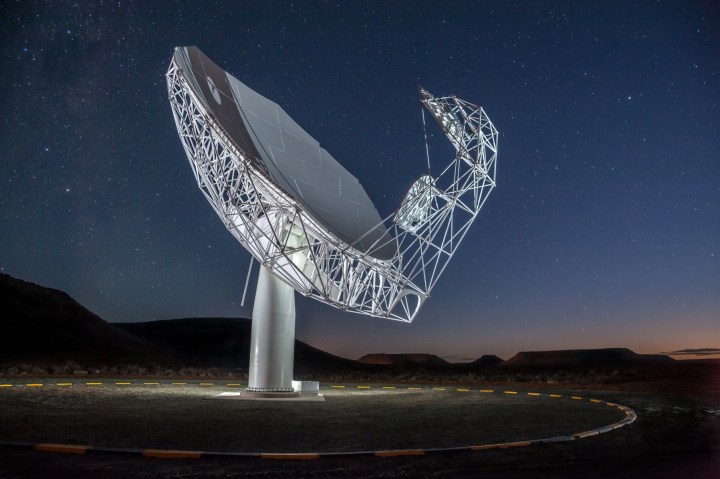It used to be the case that if you wanted a powerful telescope, you had to build it big — really big. But now, it’s possible to create a very powerful telescope by using multiple smaller antennae spread over a large area, which is how projects like the Event Horizon Telescope that took the famous first image of a black hole work.
An upcoming project called the Square Kilometer Array observatory (SKAO) is set to become the world’s largest radio telescope, with antennae placed from South Africa to Australia. It is eventually intended to have thousands of antennae, with a total receiving area of over a square kilometer, allowing it to look so far away it can see all the way back to the early stages of the universe.

SKA is currently under construction, but before it can be used for science, the design principles need to be worked out. That’s the job of MeerKAT, an array of 64 antennae in South Africa that will eventually become part of the SKAO system. Typically, the telescopes would all work together as part of an array. But recently, astronomers at the headquarters of the SKAO at Jodrell Bank in the U.K. used data from these 64 dishes in a different way, by using them individually to look at different patches of the sky, in order to build up a large-scale picture.
The researchers used the 64 antennae to create radio maps of the sky, which mapped onto galaxy positions seen by optical telescopes. That shows that the array is capable of bringing together data from many individual antennae to look at the universe on a large scale.
“This detection was made with just a small amount of pilot survey data,” said lead author Steven Cunnington of the University of Manchester in a statement. “It’s encouraging to imagine what will be achieved as MeerKAT continues to make increasingly larger observations.
“For many years I have worked towards forecasting the future capability of the SKAO. To now reach a stage where we are developing the tools we will need and demonstrating their success with real data is incredibly exciting. This only marks the beginning of what we hope will be a continuous showcase of results which advances our understanding of the Universe.”
The research is available on the preprint archive arXiv.



